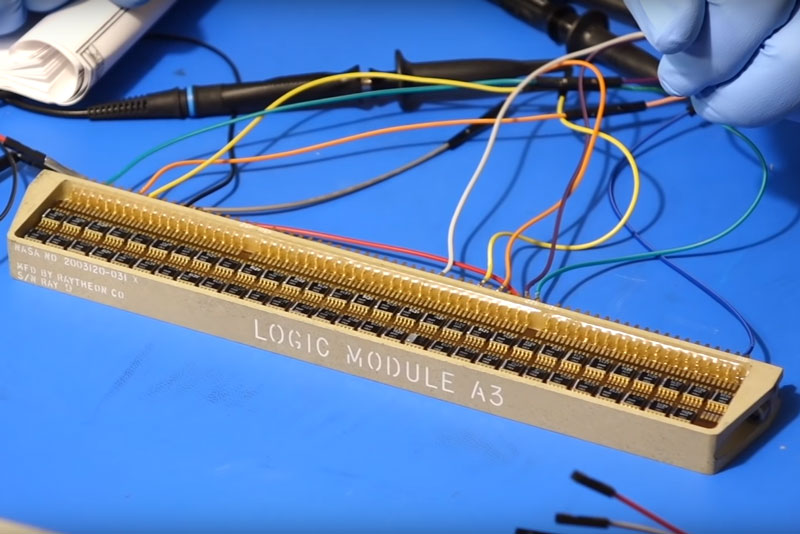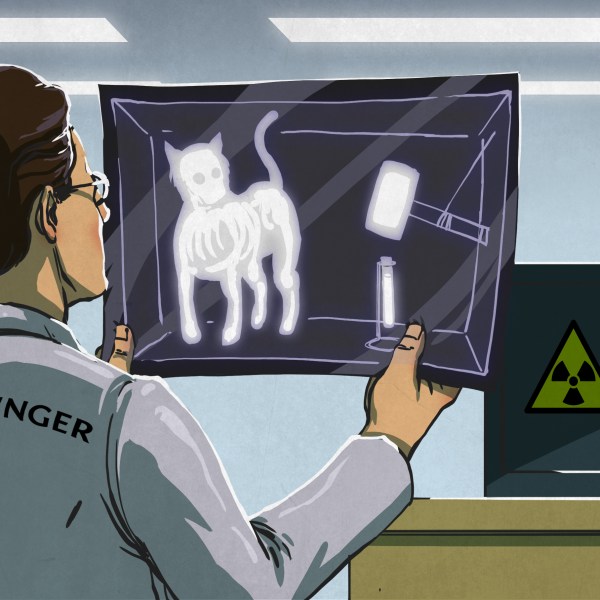The Apollo Guidance Computer is a remarkably important piece of computing history. It’s the computer that guided the Apollo lander to land on the moon. We’ve seen a few replica builds over the years, but [CuriousMarc] got a closer look at one of the real things. In this video, [Marc] gets a look inside as his colleagues take apart one of the original AGCs and get a closer look at the insides of this piece of computer history.
Thanks to collector [Jimmie Loocke], they got to take apart AGO#14, one of the original flight computers from a Lunar Excursion Module (LEM) that was used for flight testing. [Loocke] used to work at a NASA contractor and found the AGC in an electronics surplus store. He and [Mike Stewart] are working to restore the computer for the 50th anniversary of the Apollo 11 landing in 2019. The interesting thing about their AGC is that it is not potted: the chips aren’t coated in the epoxy resin or foam that protects them in flight. This means that they can take the system apart and examine the chips and the complicated wiring that connects them. And, hopefully, they can get it back up and running again. We will see: this is just the first video in a series, and this is an ongoing project. We got a look at the same computer in 2016 when [Carl Clanch] started working on it, doing things like building a replacement for the DSKY input and display panel, as the original is still in the LEM that this computer came from, which is on display in the Johnston Space Center in Houston.

















Wonderful.
Sadly I missed seeing this LEM herself at the JSC about ten years ago, let’s just say a hurricane got in the way. But I recall seeing a relative at the KSC either the year before or even earlier.
One was configured for the training steps, and is preserved at the Cape. They also have the crew boarding arm attached to a Apollo capsule. (And no I don’t know if that one was a Block 1 or a Block 2 bird. If such things exist.)
The article seems a bit confused: “We got a look at the same computer in 2016 when [Carl Clanch] started working on it” – that was two weeks ago, not 2016.
Perhaps the author had confused the recent article with this one:
https://hackaday.com/2016/09/02/decoding-rediscovered-rope-memory-from-the-apollo-guidance-computer/
I watched both videos (testing the first few logic boards and checking out the power supplies. I was pretty impressed on the design of the boards where they were able to set things up so they could duplicate the modules and not have everything so unique.
Waiting for Episodes 3 and 4 to see if they get it to run!
Thanks guys for all the efforts!
Wow!!!
What an awesome experience! Thanks for sharing!